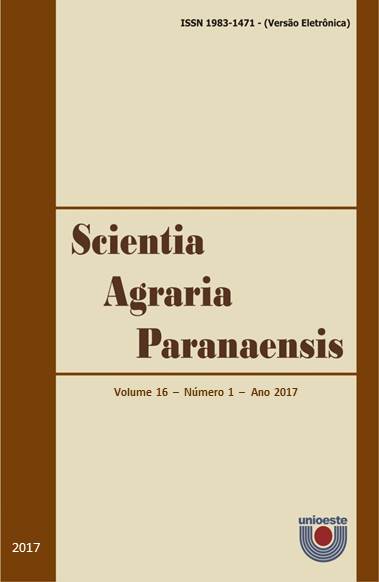Sanitary quality of honey produced by Apis mellifera and angustula Tetragonisca and the need for regulatory standard
Keywords:
stingless bees, legislation, honey, quality.Abstract
This work aimed to evaluate and compare the microbiological quality of honey samples of the species Apis mellifera and Tetragonisca angustula collected by different methods, in urban and rural areas of Ariquemes and Alto Paraíso municipalities in the state of Rondônia. For this were performed analysis for counto coliforms at 35°C and 45°C, molds and yeasts and the presence of Salmonella sp. Two samples presented total coliform, having been confirmed the presence of thermotolerant coliforms in one. It was not observed the presence of Salmonella sp. in this study while the count for yeast and molds was <3.0 CFU.g-1 for all samples. The discussion occurred by comparing the data obtained by other authors, who analyzed their results by comparing with the tolerable limits for other foods with composition and/or similar physical and chemical characteristics similar of honey. This is because the current Brazilian legislation not establish the microbiological standards for honey, although exist a regulation which addresses the sensory and physicochemical requirements, but only to honey produced by A. mellifera, thus excluding more than 400 species of bees stingless in the country, including the T. angustula. Therefore, it is suggested to Brazilian agencies that regulate the production and quality of food in the country, rethink the removal of microbiological requirements of the Technical Regulation Identity and Quality Honey, or even add them to DRC in the 12th, but that contemplates honey from stingless species, considering their peculiarities and differences between honey produced by A. mellifera.
Downloads
Published
How to Cite
Issue
Section
License
Aviso de Direito Autoral Creative Commons
Política para Periódicos de Acesso Livre
Autores que publicam nesta revista concordam com os seguintes termos:
1. Autores mantém os direitos autorais e concedem à revista o direito de primeira publicação, com o trabalho simultaneamente licenciado sob a Licença Creative Commons Attribution que permite o compartilhamento do trabalho com reconhecimento da autoria e publicação inicial nesta revista.2. Autores têm autorização para assumir contratos adicionais separadamente, para distribuição não-exclusiva da versão do trabalho publicada nesta revista (ex.: publicar em repositório institucional ou como capítulo de livro), com reconhecimento de autoria e publicação inicial nesta revista.
3. Autores têm permissão e são estimulados a publicar e distribuir seu trabalho online (ex.: em repositórios institucionais ou na sua página pessoal) a qualquer ponto antes ou durante o processo editorial, já que isso pode gerar alterações produtivas, bem como aumentar o impacto e a citação do trabalho publicado (Veja O Efeito do Acesso Livre).
Licença Creative Commons
Esta obra está licenciada com uma Licença Creative Commons Atribuição-NãoComercial-CompartilhaIgual 4.0 Internacional, o que permite compartilhar, copiar, distribuir, exibir, reproduzir, a totalidade ou partes desde que não tenha objetivo comercial e sejam citados os autores e a fonte.


